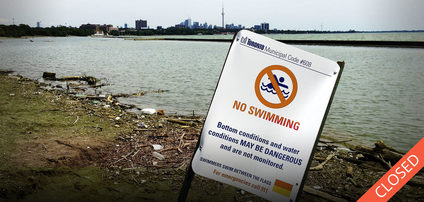
"The PCB and HBCD drafts suffer from a lack of specifics. There are no definitive goals or timelines in either document. They use generic terms such as “reducing toxins,” but fail to elaborate on how to reduce them."
The Great Lakes Water Quality Agreement between Canada and the United States was signed in 1972 by Prime Minster Pierre Trudeau and President Richard Nixon. Its goal is to identify shared priorities and coordinate action to protect the biological, chemical, and physical integrity of the Great Lakes Basin.
The Great Lakes Water Quality Agreement has been amended multiple times, most recently in 2012. Annex 3 of the latest addition identifies eight Chemicals of Mutual Concern, which are substances of human origin that pose a threat to human health and the environment. It commits our two nations to reducing the release and impact of such substances on the Great Lakes Basin Ecosystem.
PCBs (polychlorinated biphenyls), are typically used in adhesives, wooden floor finishes, and coal tar coating applied to the inside of water tanks, bridges, and other types of infrastructure. HBCDs (hexabromocyclododecanes) are used as flame retardants in upholstered furniture, insulation materials, and automobile interiors.
Sierra Club Ontario (SCO) has co-signed a review of the Draft Binational Strategies (see document attached) with other 47 environmental non-governmental organizations such as the Canadian Environmental Law Association, National Wildlife Federation, Toxics Free Great Lakes Network, and Citizens Environment Alliance of Southwestern Ontario.
The PCB and HBCD drafts suffer from a lack of specifics. There are no definitive goals or timelines in either document. They use generic terms such as “reducing toxins,” but fail to elaborate on how to reduce them. A discussion of methodology is key to future accountability. Neither document offers numbers on present day toxics levels or how current modes of remediation will contribute to the nebulous goal of reduction. Timelines are crucial here as well. By setting clear-cut goals with definitive timelines, the Canadian and United States governments would allow for transparency and accountability.
In addition to missing timelines and methodology, the drafts do not describe or even mention any sort of review process. It is imperative that both governments evaluate and monitor progress over time, in a manner easily accessible to the public. Information on current levels of PCBs and HBCDs, as well as amounts being released over time, is needed to establish an effective review process.
The Draft Binational Strategies on PCB and HBCD Risk Management are the first presented for public comment. They will set the tone for the remainder of the strategies. For this reason, it is crucial that these documents are strong, comprehensive, and committed to virtual elimination.
This article was written by Becky Bassick, Sierra Club Ontario's Green Energy & Great Lakes Campaign Volunteer.
To find out more about this issue, please contact us at "ontariochapter [at] sierraclub.ca".
Blog Image obtained from Lake Ontario Waterkeeper website.
| Attachment | Size |
|---|---|
| 929.69 KB |
